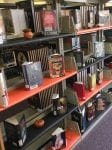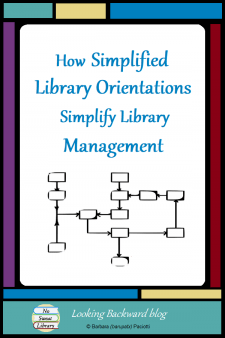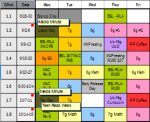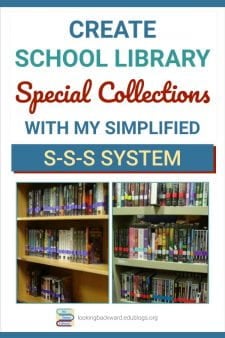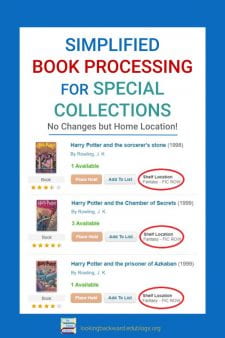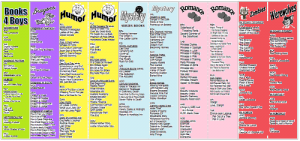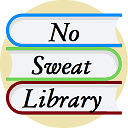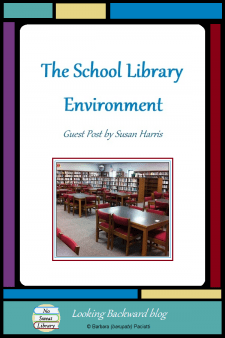 A recent edWeb contribution from Susan Harris, Librarian at Ridgeway HS in Memphis TN, was full of helpful information about the library setting, so I asked if I could publish it on my blog. Graciously she agreed.
A recent edWeb contribution from Susan Harris, Librarian at Ridgeway HS in Memphis TN, was full of helpful information about the library setting, so I asked if I could publish it on my blog. Graciously she agreed.
I am going to provide a few tips that I hope will be helpful to you. I always try to allow as much natural light in as possible, I always try to have “designated” spaces in my library, and I always try to make everything handicap accessible by leaving enough space between bookcases and tables and by not placing books on top or bottom shelves when possible.
I try to leave open shelving by my entrance so that I can create monthly book displays, and I have a bulletin board that I change monthly and use to promote literacy.
When I was an elementary school librarian, I actually had a gazebo that children could sit in and read while other children checked out books. At my current library, I have a designated area for computers (like a lab setting), a “classroom” or meeting area where I have all of my tables and a mounted SmartBoard and projector, a “reading corner” and open space. There are so many furniture choices now for children and teen reading spaces if you can afford it. There is also portable furniture (tables) now so you can make your space more accessible.
I suggest that you always attempt to have sight lines when you arrange your library because you want to be able to see what all of your students are doing from where you spend most of your time. I fortunately have a monitoring program on all of my library computers so I am able to monitor the students’ computer use while I am at the circulation desk. Of course, the placement of your power outlets, wireless access points and/or Ethernet ports will determine where your technology goes.
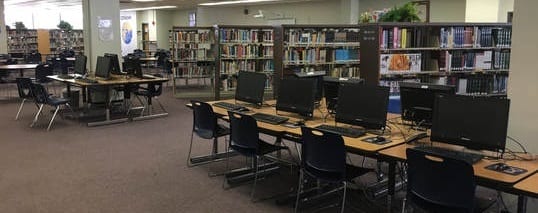
When I was an elementary librarian I always had a colorful carpet for the students to sit on while I read aloud to them and I placed plush book characters on the shelves in the children’s area. For my high school students, I place greenery on top of the shelves and use Ficus trees and paintings for decor.
I know that some places now like to offer a cafe setting for students to encourage them to use the library but I prefer to ban food and drink from the library setting as much as possible. A maker space would be a good way to attract students of all ages if you have the funds and the space for it. I have a conference room for small group meetings for social workers, recruiters, book club meetings, PLC meetings, etc.
I strongly suggest signage to assist students with locating materials, and I suggest the use of colorful literacy-related posters. Remember to host as many literacy-related programs as possible: National Library Card Sign-Up Month, Teen Read Week, Banned Book Week, National Library Month, Read Across America, Read for the Record, Drop Everything and Read, etc.
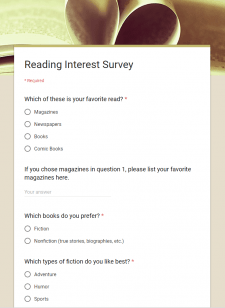 I also do special things like trick or treat the librarian, and I have a library orientation scavenger hunt. I find that hosting annual orientation is the best way to make students aware of what you offer, your policies and your procedures. I also try to include students when ordering books by asking for recommendations from them. I have a survey on my school website for students and for teachers to complete about their interests and needs. I provide a link to the OPAC on my library website.
I also do special things like trick or treat the librarian, and I have a library orientation scavenger hunt. I find that hosting annual orientation is the best way to make students aware of what you offer, your policies and your procedures. I also try to include students when ordering books by asking for recommendations from them. I have a survey on my school website for students and for teachers to complete about their interests and needs. I provide a link to the OPAC on my library website.
Many people are using social media now to strike up interest in the library. Let the children know that you are there for them. I try to go the extra mile by posting scholarship information on my website and by reading over students’ papers when they ask me to.
Providing a clean and inviting environment is one of the best ways to get them in the door. Make sure your collection is up-to-date. Offer a book swap basket where you place paperback books that can be exchanged (no strings attached) for paperbacks that students have already read and have sitting around the house.
Come in early, stay late, and leave the library open through all lunch periods so students know that they are welcome and you are available. Host a teacher library orientation session so you can get teachers on board with library use. Co-teach classes when possible. Many students will come to the library as their “safety zone” if they are loners or if they are trying to avoid trouble. Make everyone feel welcome.
 Susan Harris is in her 26th year as a school librarian. She has served as a public librarian, an elementary school librarian and a high school librarian. Mrs. Harris graduated from Northwest Community College, the University of Mississippi, and the University of Southern Mississippi. She holds a Master of Library and Information Science Degree. She welcomes all students to visit the library for pleasure reading, research, and study, and is willing to stay after hours to assist students when needed.
Susan Harris is in her 26th year as a school librarian. She has served as a public librarian, an elementary school librarian and a high school librarian. Mrs. Harris graduated from Northwest Community College, the University of Mississippi, and the University of Southern Mississippi. She holds a Master of Library and Information Science Degree. She welcomes all students to visit the library for pleasure reading, research, and study, and is willing to stay after hours to assist students when needed.
